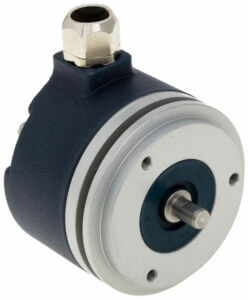Siemens wind turbines thrive with Leine & Linde encoders
Case Study – Wind Power, Denmark
 Wind power is the fastest-growing renewable energy source in the world. Siemens Wind Power in Denmark is one of the players in the wind power industry to have chosen Leine & Linde to supply pulse encoders. After having completed many large projects and having been involved in the wind power industry for 25 years, specialist knowledge has become a highly-valued commodity.
Wind power is the fastest-growing renewable energy source in the world. Siemens Wind Power in Denmark is one of the players in the wind power industry to have chosen Leine & Linde to supply pulse encoders. After having completed many large projects and having been involved in the wind power industry for 25 years, specialist knowledge has become a highly-valued commodity.
Siemens Wind Power has operations in Denmark, Germany, the UK and the USA. The company has a total of 4,700 employees throughout the world, and they are promoted as its most important resource. Siemens Wind Power’s extensive experience, technical expertise and commitment have resulted in hundreds of wind farms, including the world’s largest onshore and offshore farms.
Karsten Jeppesen, Sales Manager at Leine & Linde in Denmark, has noticed a sharp increase in sales of encoders in the wind power sector over the past two years, largely due to an increasingly strong desire to reduce environmentally-harmful emissions in Denmark. The 58 mm absolute encoder is the most popular within this market, but both incremental and absolute encoders are used for speed feedback or positioning.
Optimizing generator speed
Siemens wind turbines have Leine & Linde pulse encoders attached to each rotor blade and installed in the actual tower. The positional information from the encoders is used by the main control system to optimize generator speed relative to wind speed and direction.
Thomas Holm Krogh is one of the development engineers at Siemens Wind Power. He explains that they chose Leine & Linde’s products after endless reviewing and testing of various encoder models and makes. ”The reason that we ultimately chose Leine & Linde was the unique high level of quality,” says Thomas.
It is essential for the components used to be robust because wind turbines are sited in areas with very large temperature fluctuations. In addition, many wind turbines are out at sea, so the products must be reliable and durable, otherwise servicing and maintenance costs can often spiral out of control.
Thomas feels that contact with Leine & Linde is working well: ”The partnership is progressing smoothly and we set great store by the rapid technical support we have received. Leine & Linde’s engineers have helped us a great deal with the slightly more complex technical details. The fact that Leine & Linde have taken the initiative themselves is something we see as a huge plus.”
Development for the future
Siemens Wind Power is at the forefront when it comes to development of advanced technology within fields such as aerodynamics and noise reduction.
Thomas Holm Krogh clearly recognizes the trend and the need for ever larger wind farms. Customers see wind farms as power stations and an increasing percentage are being sited offshore.
Development within the field of encoders is also moving towards more advanced communication interfaces for control and monitoring. ProfiNet, which is expected to become an important protocol in wind turbines of the future, is currently being evaluated. The motive behind this is to improve performance, standardize communication and employ diagnostic functions to increase operational reliability and minimize operating and maintenance costs.
In terms of generators, the trend is moving towards use of permanently magnetized generators. This type of generator makes it possible to have wind turbines without gearboxes.

